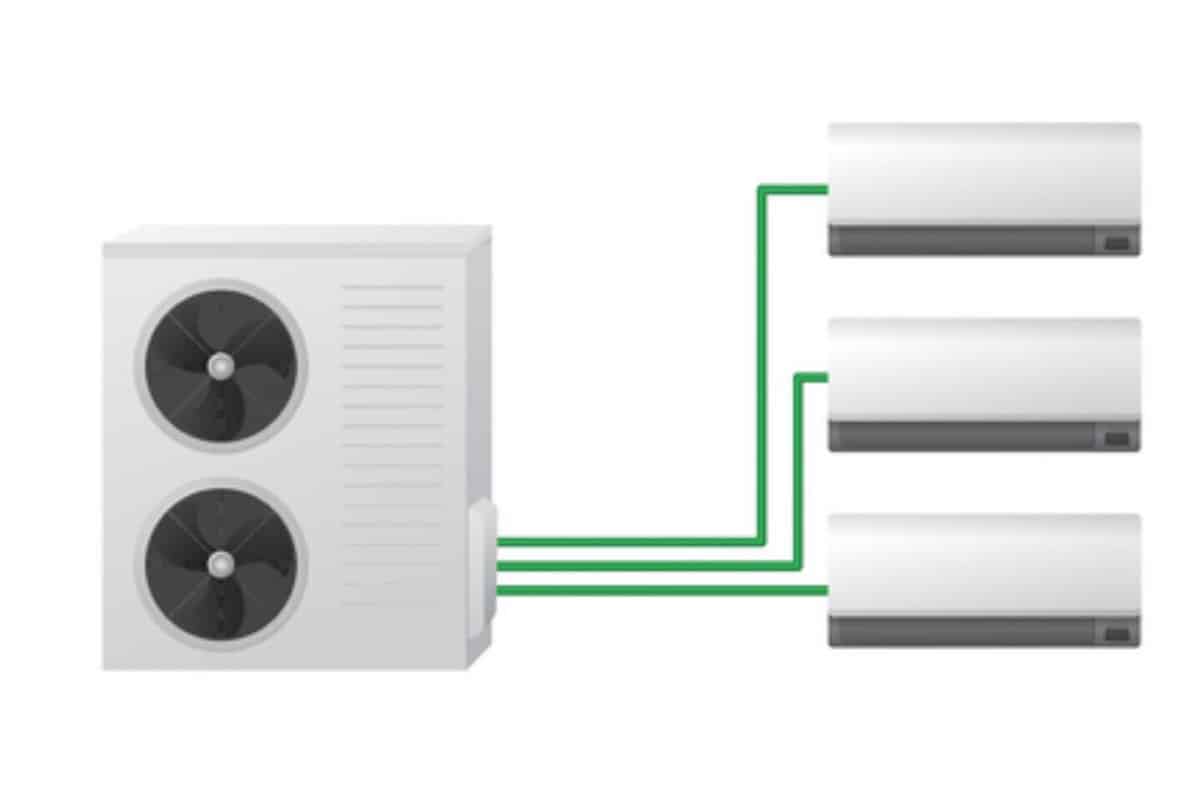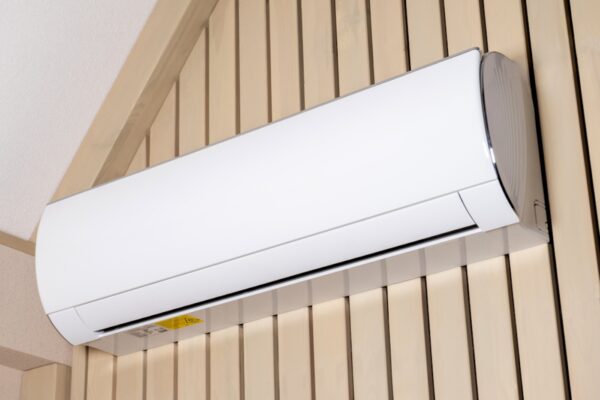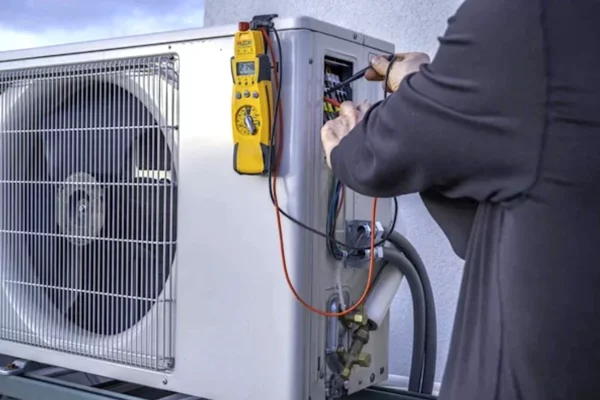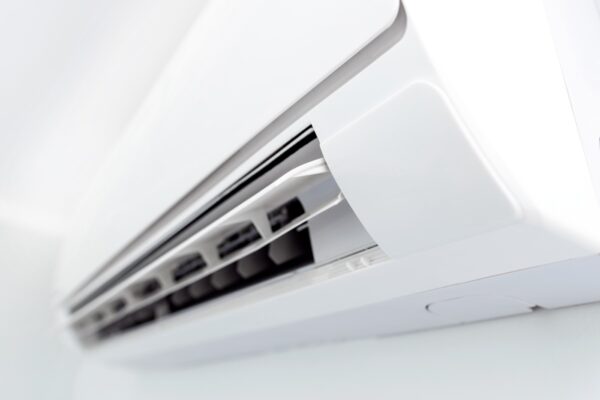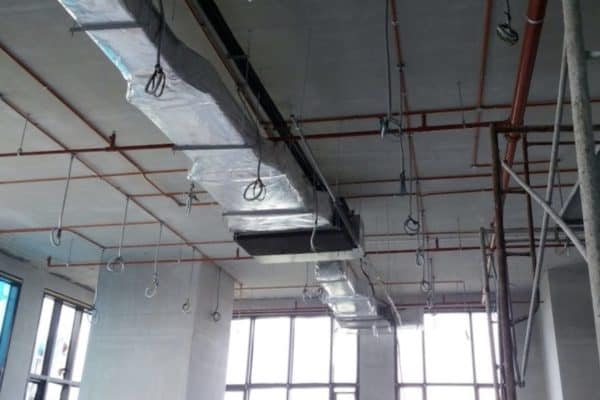What is Multi Split Air Conditioner? (Capacity Sharing)
Some people use multi-split air conditioners in their houses. What exactly is a multi-split air conditioner and how does it work?
Multi-split air conditioner is a direct expansion air conditioning system that consists of multiple evaporators and a single condenser. A typical multi-split condenser can have up to 5 ports that connect to individual evaporators. All evaporators and the condenser are interlinked and thus, any refrigerant leakages can cause the entire multi-split system to stop functioning.
The multi split air conditioner is very similar to the split air conditioner but, with only a single condenser. The main selling point of the multi split air conditioner is space-saving with a single condenser. However, with the right application, it is more than just a space-saving tool.
How Multi Split Air Conditioner Works?
The multi-split has a single condenser that is larger (both physical dimension and cooling capacity) than the condenser of a split air conditioner. The multi-split condenser has an intelligent control board that receives/gives signals from/to each of its evaporators. The multi-split condenser is able to communicate and control all its associated evaporators.
The multi-split air conditioner always has an inverter compressor. The condenser of the multi-split air conditioner distributes refrigerant to each of its evaporators based on the signals given by each of the evaporators. The multi-split air conditioner is able to operate even with just one of its evaporators turned on.
Cooling Capacity Sharing
Multi-split air conditioners are designed with a diversity factor. The multi-split air conditioner shares the cooling capacity between its evaporators. The sum of the cooling capacity of its evaporators is always more than the condenser.

From the above table:
- The total capacity of the condenser (outdoor unit) is 5kW or 17,060 BTU
- The capacity of one of the evaporators (indoor unit) labeled as “25” is 2.5kW or 8,530 BTU
- The capacity of the other evaporator (indoor unit) labeled as “35” is 3.5kW or 11,942 BTU
Case Study Scenario
For example, if you pair this MKC50RVM outdoor unit with 3 indoor units (25+25+35), you’ll have a 5kW condenser and a total of 8.5kW evaporators. The sum of the capacity of the evaporators is more than the condenser. Following are examples of the situation and the capacity distribution of the multi-split air conditioner:
- When you turn on only a single 2.5kW indoor unit in “Room A”, the indoor unit will have a full 2.5kW of cooling capacity because the outdoor unit has 5kW of cooling capacity.
- Similarly, when you turn on only a single 3.5kW indoor unit in “Room A”, the indoor unit will have a full 3.5kW of cooling capacity because the outdoor unit has 5kW of cooling capacity.
- Also, when you turn on two 2.5kW indoor units in “Room A” and “Room B”, both indoor units will also have a full 2.5kW of cooling capacity and it adds up to 5kW which is exactly the total capacity of the outdoor unit.
When the total capacity of the operating indoor units surpassed the outdoor unit, the multi-split air conditioner no longer able to provide maximum capacity for all indoor units simultaneously. However, once a room is cooled, it can distribute the cooling power to other indoor units. The examples continue as follow:
- When you turn on one 2.5kW and one 3.5kW indoor unit, both indoor units will only have 2.08kW and 2.92kW of cooling capacity respectively because the outdoor unit only has 5kW of cooling capacity.
- Similarly, when you turn on two 3.5kW indoor units, both indoor units will only have 2.5kW of cooling capacity because again, the outdoor unit has only 5kW of cooling capacity.
- The worst-case scenario is when you turn on all three indoor units (2.5+2.5+3.5) simultaneously, you can see from the above table that the cooling capacity of each indoor unit is almost halved.
It is because the principle behind the application of the multi-split air conditioner is the assumption of only 2 out of 3 indoor units will be operating simultaneously at any given time. In another word, if all three indoor units are required to operate together, all three indoor units may not able to provide sufficient cooling.
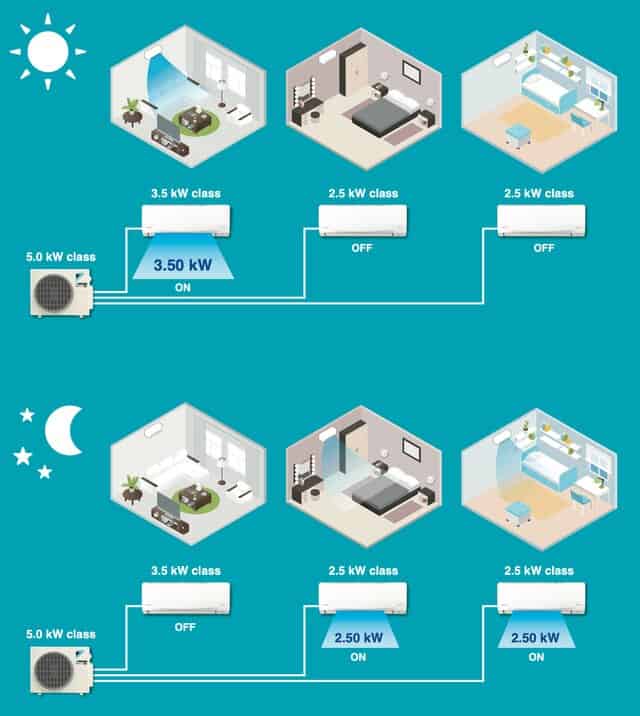
Further to the above illustration, Daikin stated that:
“In most family homes, it is unusual for all indoor units to operate together. During the day, people tend to use shared spaces such as the family room. At night, they mainly use the bedrooms. This is why a multi-split outdoor unit can be connected to indoor units which exceed its capacity.”
Daikin, Japanese Air Conditioner Manufacturer
Notice that the total capacity of the outdoor unit is 5kW but it followed by a range of capacity stating that the minimum capacity is 1.2kW and the maximum capacity is 6.2kW. It means that when a single indoor unit is in operation, its cooling capacity can be as low as 1.2kW or 4,094 BTU.
During worst-case scenario where all three indoor units are required to operate simultaneously, the multi-split air conditioner can stretch its cooling capacity further from 5kW to 6.2kW (21,154 BTU) and share with its indoor units to improve the rate of cooling and hopefully, provide sufficient cooling to all room at the same time.
Advantages of Multi Split Air Conditioner
Because the multi-split air conditioner only has a single condenser compared to the split air conditioner which usually has 2-3 units of the condenser with the same cooling capacity, the multi-split air conditioner is targeted at people who have limited space in their house or they wish to have more space in their house.

Besides, the multi-split air conditioner can be cheaper to service. Typically, professional service providers charge their service based on the quantity and size of the air conditioner. However, the quantity of the air conditioner affects their price significantly more than the size of the air conditioner. Therefore, less air conditioner means cheaper service cost.
Multi Split Air Conditioner vs Split Air Conditioner
The multi-split air conditioner has a single condenser only while the split air conditioner has multiple condenser units with the same cooling capacity. The multi-split air conditioner is always an inverter type and thus, most of the performances are the same as the inverter split air conditioner.
Comparing multi-split air conditioners to non-inverter split air conditioners is not fair and not true because most of the advantages of the multi-split air conditioner over the non-inverter split air conditioner are due to the inverter technology itself, not because of the multi-split system.
Following are some of the differences between the multi split and the split system:
| Comparison Metrics | Multi Split Air Conditioner | Split Air Conditioner |
|---|---|---|
| Cost to purchase | More expensive | Cheaper |
| Cost of installation | More expensive | Cheaper |
| Cost of maintenance | Can be cheaper | Can be more expensive |
| Ease of maintenance | Same | Same |
| Energy efficiency | Same with inverter split | Same if using inverter |
| Cooling speed | Same with inverter split | Same if using inverter |
| Noise level | Outdoor unit louder, indoor unit same | Outdoor unit quieter, indoor unit same |
| Available cooling capacity | Same for a single indoor unit | Same for a single indoor unit |
| House exterior aesthetic | Great because of one condenser only | Poor due to many condensers |
| Application | Small apartment, flat, small terrace house | Apartment, landed house, small office |
Lastly, consider my Mini Split (eBook) if you want to know how can you use Mini Split in your house. If you still have doubt or not feeling confident enough, feel free to consult me.
Consultation Service
Ask me for HVAC advice such as brand selection, best model, benefits, features, placement, duct size, grille size, how to design, design check, verification and other HVAC related queries.
If you have anything to add (or ask) about this topic, leave a comment down below!


